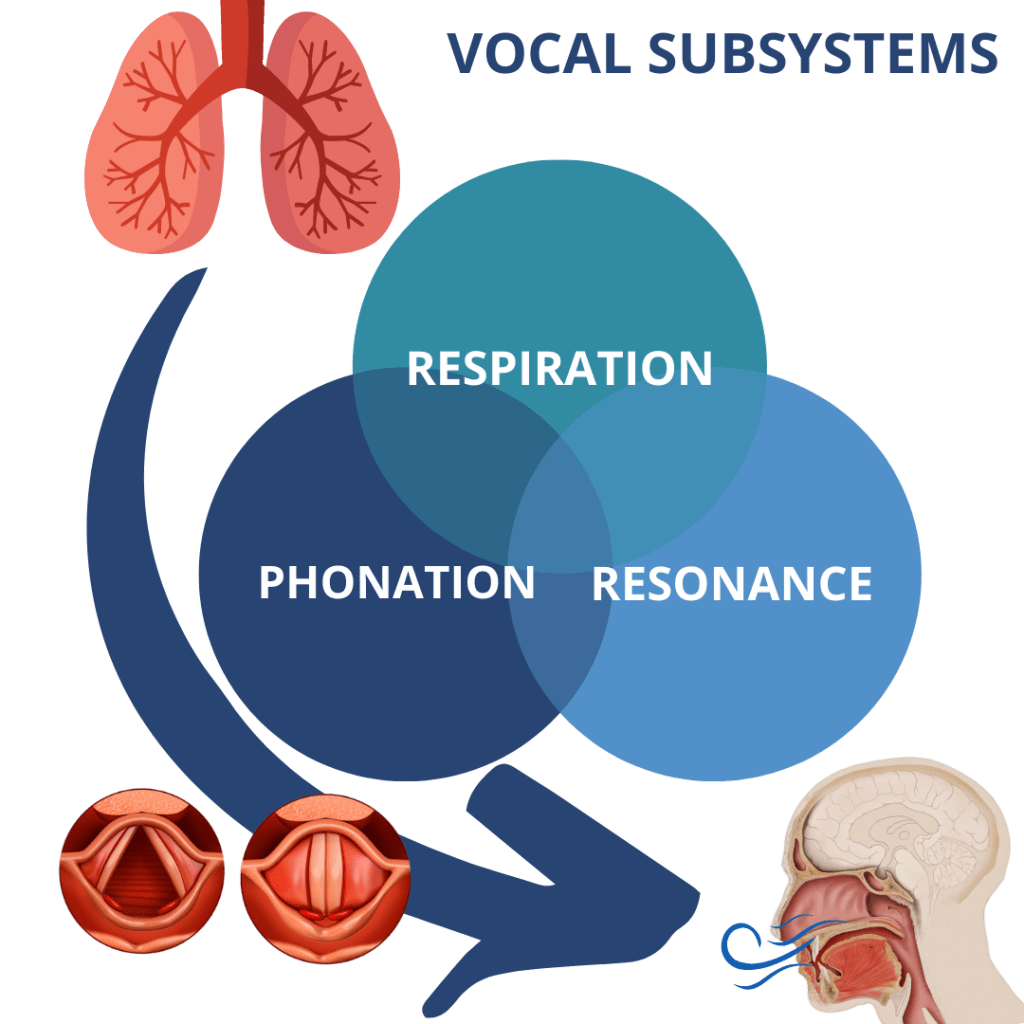
The Vocal Sub-Systems
For efficient and healthy voice we need to balance and connect our vocal subsystems.
Voice begins with breath or respiration, which begins in the lungs. Air is inhaled causing the diaphragm to contract. When air is exhaled the diaphragm relaxes and the abdominal muscles help the lungs to deflate. Controlling this airflow can help with voice quality.
We have two vocal cords which sit across the airway just behind the Adam’s Apple in the throat. They are set into motion by the breath coming from the lungs and a message from the brain that we want to voice. The vocal cords open and close quickly to vibrate the air creating a sound source.
Resonance occurs as the sound waves travels through our vocal tract and are amplified. Resonance will vary depending on the shape, size and posture of the vocal tract.
Balancing these sub-systems relies on three fundamental things:
- Airflow control
- Posture and positioning
- Relaxed musculature
Airflow Control
Our breathing patterns heavily influence our vocal technique. Our breath is the fuel to our voice and we need to ensure we have enough breath and are in control of the outflow of air through the voice box as we speak.
If you notice that your breath and voice aren’t quite coordinated or you run out of breath as you talk or feel out of breath when walking and talking here are some tips on airflow:
- Slow down talking fractionally.
- Pause to take a breath in regularly.
Healthy breathing at rest is through the NOSE, is SLOW and is LOW, consider this as often as possible. Avoid your upper chest or shoulders moving as you breathe, they should be still and relaxed. Instead you want to feel your lower ribs and abdomen extend slightly as you breathe in.
Posture and Positioning
Your upper body posture will determine the position of the vocal cords and can influence voice quality. Symmetry of the voice box is important. Posture can also compromise easy breathing if the respiratory system and diaphragm muscle movements are restricted by poor posture.
Tips to enhance posture for efficient voice production:
- Avoid over correcting your posture
- Avoid locked joints – relax them out
- Keep weight balanced evenly: through your feet when standing; through your back bone when sitting.
- Your head should feel effortless resting on spine
- Shoulders should be relaxed and lowered
- Be upright but relaxed
- Avoid neck turns when talking
Relaxed Musculature:
The vocal cords and voice box are controlled by multiple pairs of muscles that work together very precisely. They work best when supple and strong. For various reasons excessive muscle tension can occur in the voice box and this impacts on voice quality.
Tips on relaxing the vocal tract for healthy voice:
- Consider both your posture and airflow during speech.
- Roll your shoulders forwards and backwards a few times.
- Stretch your neck side to side; turn your neck side to side.
- Prioritise time to relax every day.
- Try some total body relaxation or mindfulness.
The vocal sub-systems probably wont be aligned and balanced 100% of the time! And that’s ok. This is real life and the factors that influence our bodies every day. Fluctuating efficiency of the vocal sub-systems is not necessarily going to convert into a voice disorder or problems. But it does increase the risk somewhat, particularly if your voice is under high or even excessive demand. As I’ve said many time before, if you consider yourself a vocal athlete, treat your voice and vocal sub-systems like a sports athlete would treat their body and physical fitness. Do you?
Category: Voice